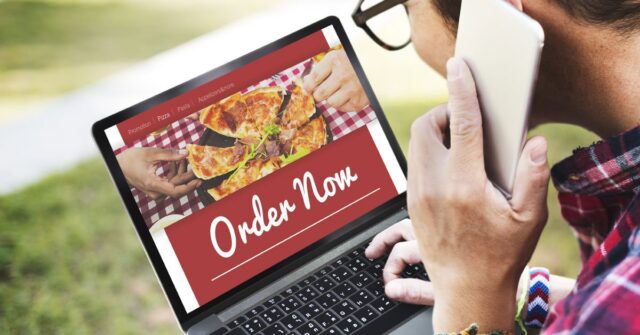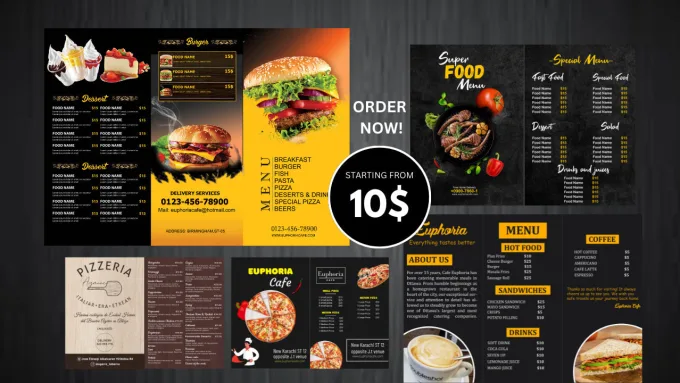An interactive menu on your restaurant website serves as a crucial touchpoint for potential customers. It not only showcases your culinary offerings but also enhances user experience, increases engagement, and drives conversions. In today’s digital age, an effective interactive menu can set your restaurant apart from the competition. Here are some best practices to consider when designing an interactive menu for your restaurant website.

Table of Contents
Toggle1. Prioritize User-Friendly Navigation
The primary goal of your interactive menu is to provide a seamless user experience. Ensure that your menu is easy to navigate, allowing users to find what they’re looking for quickly.
Best Practices:
- Clear Categories: Organize your menu into clear categories, such as appetizers, entrees, desserts, and beverages. This structure helps customers browse effortlessly.
- Search Functionality: Incorporate a search bar that allows users to quickly find specific dishes or ingredients.
- Responsive Design: Ensure your menu is mobile-friendly, adapting well to different screen sizes. A responsive design guarantees that users have a positive experience whether they’re on a desktop or mobile device.
2. Use High-Quality Imagery
Visual appeal plays a significant role in a restaurant’s online presence. High-quality images of your dishes can entice customers and create a lasting impression.
Best Practices:
- Professional Photography: Invest in professional food photography to showcase your dishes. Bright, well-composed images can make your menu more attractive.
- Consistent Style: Maintain a consistent style for all images to create a cohesive look. Consider using similar backgrounds or lighting for a polished presentation.
- Interactive Elements: Consider using image galleries or sliders for dishes, allowing users to view different angles or variations of a dish.
3. Incorporate Descriptive Text
While images are vital, accompanying descriptive text enhances user understanding and encourages orders. Well-written descriptions can make your menu items more appealing.
Best Practices:
- Ingredient Highlights: Describe key ingredients, flavors, and preparation methods to give customers insight into what makes each dish special.
- Storytelling: Use storytelling elements to connect with customers emotionally. Share the inspiration behind a dish or its cultural significance.
- Dietary Information: Include information about allergens, dietary restrictions, or special diets (e.g., vegan, gluten-free) to help customers make informed choices.
4. Enable Interactive Features
Adding interactive elements to your menu can significantly enhance user engagement. These features can make browsing more enjoyable and informative.
Best Practices:
- Hover Effects: Implement hover effects that provide additional information or visuals when users mouse over a menu item.
- Filters and Sort Options: Allow users to filter dishes based on dietary preferences or sort by popularity, price, or preparation time.
- Customization Options: Enable users to customize their orders (e.g., selecting sides or modifying ingredients), making the experience more personal.
5. Highlight Specials and Promotions
An interactive menu is a great place to showcase special offers, seasonal dishes, or limited-time promotions.
Best Practices:
- Spotlight Section: Create a dedicated section for specials that stands out on the menu, perhaps using a different color or design element.
- Countdown Timers: If applicable, use countdown timers for limited-time offers to create urgency and encourage immediate action.
- Discount Information: Clearly display any discounts or bundle deals to entice customers to try more items.
6. Optimize for SEO
To attract more visitors to your restaurant website, ensure your interactive menu is optimized for search engines. SEO helps improve your website’s visibility in search results.
Best Practices:
- Keyword-Rich Descriptions: Use relevant keywords in your dish descriptions to enhance search engine optimization.
- Alt Text for Images: Include descriptive alt text for all images, as this not only helps with SEO but also makes your site more accessible.
- Structured Data Markup: Implement schema markup to help search engines understand your menu items better, potentially resulting in rich snippets in search results.
7. Integrate with Online Ordering and Reservations
If your restaurant offers online ordering or reservation services, integrating these features into your interactive menu can streamline the customer experience.
Best Practices:
- Order Buttons: Include “Order Now” buttons next to each menu item for easy access to online ordering.
- Reservation Links: If applicable, link menu items to reservation services for special occasions (e.g., tasting menus, chef’s specials).
- Cart Functionality: Ensure that customers can easily add items to their cart without leaving the menu page, allowing for a smoother ordering process.
8. Regularly Update Your Menu
Keeping your menu current is essential for maintaining customer interest and trust. Regular updates ensure that users are informed about your latest offerings.
Best Practices:
- Seasonal Changes: Update your menu to reflect seasonal ingredients or special events.
- Feedback Incorporation: Listen to customer feedback and make necessary adjustments based on popular demand or changing preferences.
- Version History: Maintain a version history of menu changes to track which items resonate with customers and which do not.
Conclusion
Designing an interactive menu for your restaurant website is an invaluable investment that can enhance user experience, increase engagement, and drive sales. By prioritizing user-friendly navigation, utilizing high-quality imagery, incorporating descriptive text, enabling interactive features, highlighting specials, optimizing for SEO, integrating ordering capabilities, and keeping the menu updated, you can create an engaging and effective online menu. As a result, your restaurant will not only attract more customers but also build lasting relationships with them through a seamless online dining experience.


No responses yet